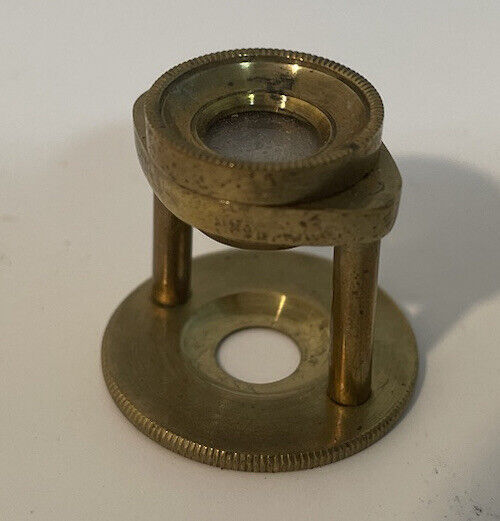-40%
1900s Working Antique Spencer Buffalo Stereoscope Complete with Wooden Case
$ 369.6
- Description
- Size Guide
Description
1900s Working Antique Spencer Buffalo Stereoscope Complete with Wooden Case.Sold as is and Wooden case is included.
Please read below
Description
: This antique pathology stereo dissecting scope dates to the early 1900’s (1910-1920s). It includes a 6x power binocular eyepiece and a rotating turret with 1x, 2.5x, and 4.5x detachable objectives, all of which are in working condition and were recently cleaned. The scope uses a mirror to direct light from an outside source, the mirror has both a concave and flat side to enhance transmitted light focusing ability; both of which are in good condition. The scope also comes with a stage plate with white and black sides to allow for direct illumination of subjects. The scope head and neck angle can be adjusted for improved ergonomics. This sale also includes the wooden carrying box, which has a functional locking key. The box also includes a storage slot for the black/white plate. It is a beautiful piece in full working condition, a wonderful addition to any collection. All of the hardware on the box are original to it, and recently polished.
This scope is model number PATH-D 35 (serial number 122234) made by the Spencer Co. in Buffalo, NY, USA. Charles Spencer founded the company “C.A. Spencer & Sons” in Canastota, New York in 1838 and recognized as the first American to successfully make microscopes domestically. In 1873 the business was moved to Geneva, New York, and continued to make and sell microscopes labeled "C.A. Spencer & Sons for Geneva Optical Company." In 1890 the company was moved to Buffalo, New York by Charles’ son, and the labeling was again changed to “Spencer Buffalo” (as is seen on this microscope).
There are stress cracks throughout the cast iron neck. The larger of these cracks have been filled with epoxy to stabilize the head; use caution when carrying or manipulating head. The working distance adjusting mechanism was recently cleaned and lubricated, though does not quite reach maximal distance limiting ability to view larger specimens. A superficial region of pain has chipped off from one of the eyepieces. The glass stage has several minor scratches, which do not impact use.




















